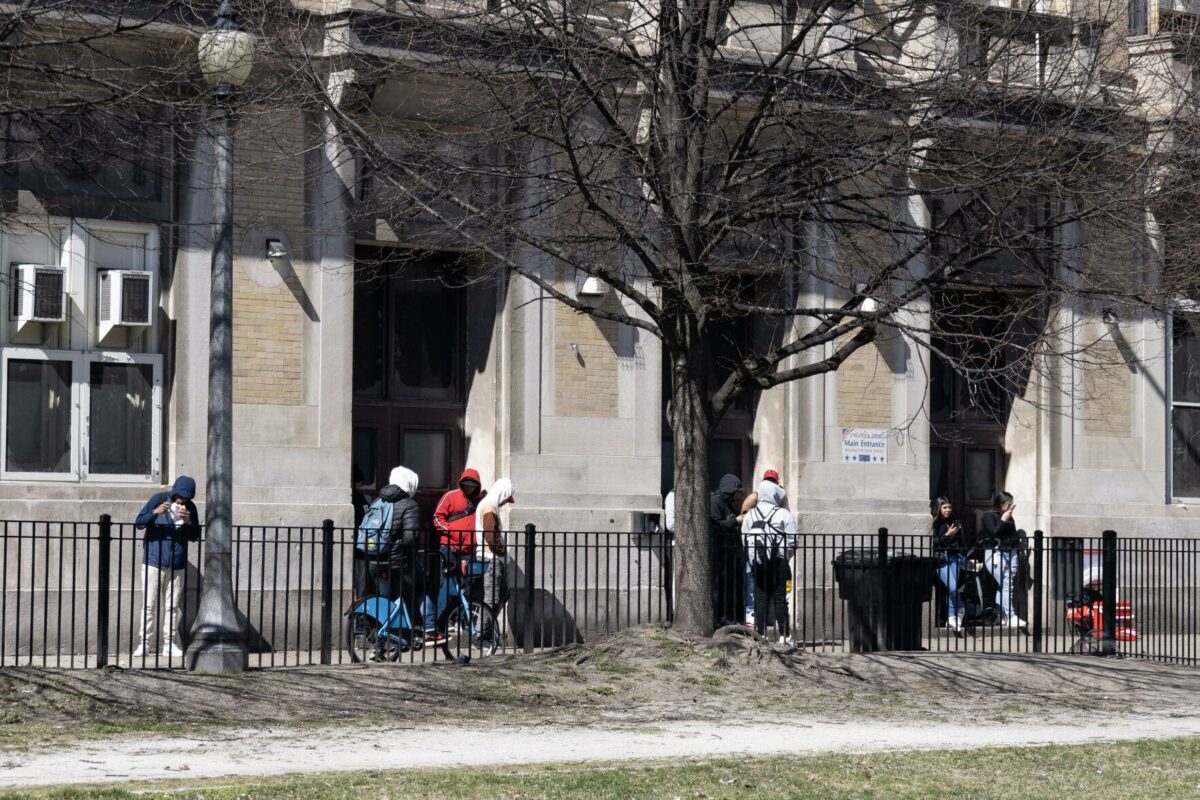This story was originally published by the Hyde Park Herald.
The city quietly closed the Wadsworth migrant shelter in Woodlawn on Monday, May 13, the latest shelter closing amid resettlement efforts and facility consolidation.
In a May 13 announcement, the city said it had “recently decompressed” the shuttered elementary school turned shelter, located at 6420 S. University Ave. Closing after fifteen months in operation, Wadsworth at its peak housed as many as 600 people, most of whom were single men from Venezuela seeking asylum.
According to the city, those who remained in Wadsworth at the time of its closure were relocated to nearby city-run shelters.
As of May 3, more than 500 people still resided at Wadsworth. A spokesperson for the mayor did not respond to the Herald’s question of how many residents remained in the shelter at the time of its closure.
In Monday’s announcement of the closure, the city said it has reduced the total number of migrant shelters from twenty-seven to sixteen over the past year. It cites collaboration with the county and state, cost-saving measures and “creative partnerships” with nonprofits as key to the city’s resettlement efforts.
“When I took over this Mission a year ago, there were thousands of asylum seekers sleeping on police station floors with almost a thousand more living at our City’s airports,” said Mayor Brandon Johnson in the statement. “I’m proud of the work that we have accomplished this first year to move folks out of police stations and into temporary emergency shelter where they have received medical services, become part of our public education system, and have made major strides on the path to independence and self-sufficiency.”
The city statement boasts cost savings resulting from its sixty-day shelter limits, facility consolidation and the renegotiation of its contract with Favorite Staffing—the company staffing most city-run migrant shelters—amounting to more than $200 million in estimated savings over the next year. (Last year, according to reports, Chicago spent about $138 million to care for migrants; the state spent about $478 million.)
The city opened Wadsworth in February of 2023 as part of its shelter network for the thousands of migrants sent to Chicago from the country’s southern border since the prior August. Like many of the other shelter openings around the city, Wadsworth was met with pushback from some of the surrounding Woodlawn community.
At contentious community meetings ahead of the opening, residents expressed exasperation at city officials moving ahead with the shelter without community input in a neighborhood that many said the city has neglected for decades. In meetings after its opening, some neighbors expressed grievances about alleged problems of littering, physical altercations, illicit activities, noise and decreased parking availability in the area.
At the time of its opening, city officials promised to only use the building for two years and estimated a cap of 250 inhabitants. But as migration picked up—as of last Monday, more than 41,000 people seeking asylum have traveled independently or been sent to Chicago since 2022—capacities increased, drawing more criticism from neighbors.
More than 23,000 have been resettled in the Chicagoland area or reunited with sponsors or family since August of 2022, a number the city attributed to partnerships with the state.
The city also reports that its temporary shelter system currently is housing fewer than 8,000 people, which is half of the roughly 16,000 that were living in shelters at its peak in December of last year. It also reports that Chicago Park District sites used as temporary shelters have all returned to normal use.
The city will still receive migrants at the “landing zone,” the area where buses transporting migrants into the state are supposed to drop people off and where those evicted from a shelter can make a new shelter request.
Zoe Pharo is a reporter for the Hyde Park Herald.

